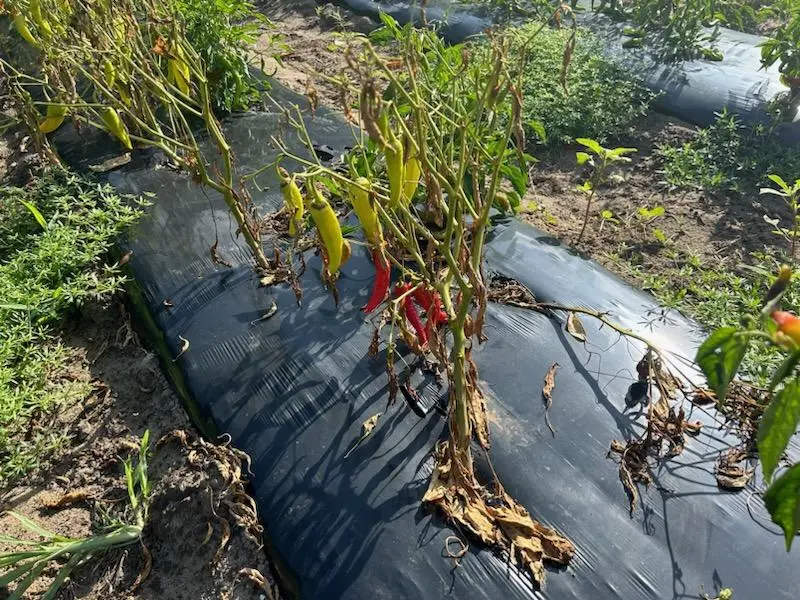
Weekly Field Update
Clemson Extension agents provide updates in The South Carolina Grower this week about the status of various crops being produced throughout the state.
Coastal Region
Anna Sara Hill
- Watermelon harvests continue in great quantities during the month of July! At the beginning of the week, we got some much-needed rain, enough to settle the dust, slightly cool down the temperatures and make the humidity soar. The weather relief was short lived, and the temperatures continue to rise. This means that conditions are prime for many vegetable diseases.
- This past week anthracnose was noted on peppers. The early phase of anthracnose is characterized by yellow target-like lesions with concentric rings. It affects both leaves and fruit but does not affect water or nutrient transport in the plant. The fungus lives in the center part of the lesion which eventually turns brown and falls out, creating shotholes. Anthracnose can survive on a host in a latent form and become parasitic when the host is weakened and environmental conditions are favorable. Anthracnose can cause dark brown sunken lesions. Cabrio and Fontelis are both good choices for suppression and protection. Treat both infected plants and uninfected plants at the recommended rate.
Zack Snipes
- Another hot week in the Lowcountry. We are extremely dry in most places throughout the counties. Hopefully we will get some much-needed rain this week.
- Our rabbiteye blueberry crop is wrapping up. This was the largest crop that I have ever seen. One farmer of 60 years said that it’s the largest crop he’s ever seen. The only issue was that we didn’t have enough people to pick them this year.
- We are experiencing heavy worm pressure in tomatoes right now with most of the damage coming from armyworms. They will feed on both foliage and fruit. There are many options to control these pests, but if you have heavy populations, chances are they have already done a good bit of damage to the fruit.
- All cucurbit crops are just about finished. They finished quickly this year due to the heat and high levels of gummy stem blight. We’re seeing a good bit of sunburned melons right now.
Midlands
Rob Last
- Crops continue to look good in the Midlands with good quality.
- Following some welcome rainfall and more in the forecast, humidity will increase and potentially increase disease pressure.
- Anthracnose fruit rots, Alternaria leaf blight, and sun scald are showing up in various crops. Disease pressure will increase with the increase in free leaf moisture and humidity. Scout often, and if in doubt consult your Extension Agent.
- Summer cover crops can be valuable for capturing excess nutrients and building soil organic matter.
- Finally on the production side, it is a good time to be thinking about ordering strawberry plants for next season.
- Heat stress is a concern for all outside workers. Limiting time in the heat and having access to cooler areas can help. Drink plenty of fluids and try to time strenuous activities for the cooler parts of the day.
Pee Dee
Brittney King
- We got some rain over the weekend that gave a little bit of relief from the hot, humid weather we have been having. Overall, crops are coming to harvest pretty quickly with relatively low disease pressure but a good amount of insect pressure.
- Stinkbugs and leaf-footed bugs continue to cause damage to vegetable crops, and cowpea curculio has made an appearance in beans and peas this year. It is recommended to begin spraying at the first flower and continue spraying on a 5-day schedule. It is important to know that the adults lay their eggs in the pea pods, so sprays should be targeted toward the adults since the larvae are protected. Besiege and Elevest can be used but will need to be used earlier in the season due to longer PHI. If using a pyrethroid for curculio management, the addition of Exponent, which is a synergist, will help improve control.
- Blackberries are producing well and should start winding down in the next couple of weeks. Those with primocane varieties should have another short harvest as we enter the fall season.
- Pumpkins went into the ground last week. It will be important to be vigilant for downy mildew and powdery mildew over the next several weeks, as weather patterns can be conducive for both.









